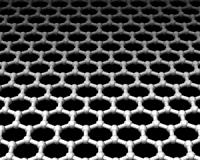 |
Washington DC (SPX) Mar 22, 2011 In the 1950s, biochemist Stanley Miller performed a series of experiments to demonstrate that organic compounds could be created under conditions mimicking the primordial Earth. Some unused samples from Miller's research were recently uncovered by a team of scientists, including Jim Cleaves, of Carnegie's Geophysical Laboratory. Their findings, carried out using modern techniques and published online by Proceedings of the National Academy of Sciences, indicate the possible importance of volcanoes and sulfur in the formation of amino acids, and possibly life, on earth. Miller's experiments were the first to demonstrate that subjecting hydrogen-rich gases to an electric spark could create the basic molecules of life. The set of samples used in this research was created in 1958. In the years since Miller's initial experiments, scientists have come to believe that the atmosphere of primitive Earth wasn't made up of the same gasses that he used in his initial study. But volcanic eruptions were likely very common during the early history of the planet and these volcanoes could have emitted clouds rich in hydrogen, methane and H2S, which would create conditions similar to Miller's experiments in limited geographic areas. The spark could have been supplied by lightning, which is commonly associated with volcanic clouds. "Preserved samples from one of Miller's experiments in 1958 using hydrogen sulfide were found in his archived collection. They had been collected, catalogued, and stored, but never analyzed," Cleaves said. "The techniques he used in the 1950s were only capable of detecting a few amino acids, but today's equipment is much more sophisticated." The team was able to identify 23 types of amino acid, some of which are the building blocks of proteins and necessary for life, including the sulfur-containing amino acid methionine, as well as four other types of organic compounds known as amines. The structures of several of the amino acids indicate that they were clearly synthesized in the experiment and not contaminants, although traces of contamination from fifty years of storage were also evident. The results showed the first known synthesis of sulfur-containing amino acids using the spark method developed by Miller. The team checked their work by comparing the amino acids created by Miller in the presence of hydrogen sulfide, to organic compounds found in carbonaceous chondrites, a type of organic-rich meteorite. They found the greatest similarity between the experiments with H2S and the carbonaceous chondrites, indicating that hydrogen sulfide may have played a role in the creation of the meteorite amino acids. "Our results demonstrate the earliest example of the synthesis of sulfur-containing organic compounds in an experiment to mimic primitive Earth conditions," Cleaves said.
Share This Article With Planet Earth
Related Links Carnegie Institution of Washington Darwin Today At TerraDaily.com
 A Carbon Cloak To Spy On Bacteria
A Carbon Cloak To Spy On BacteriaMoffett Field CA (SPX) Mar 22, 2011 Vikas Berry, assistant professor of chemical engineering at Kansas State University, and his research team are wrapping bacteria with graphene to address current challenges with imaging bacteria under electron microscopes. Berry's method creates a carbon cloak that protects the bacteria, allowing them to be imaged at their natural size and increasing the image's resolution. Graphene is a f ... read more |
|
| The content herein, unless otherwise known to be public domain, are Copyright 1995-2010 - SpaceDaily. AFP and UPI Wire Stories are copyright Agence France-Presse and United Press International. ESA Portal Reports are copyright European Space Agency. All NASA sourced material is public domain. Additional copyrights may apply in whole or part to other bona fide parties. Advertising does not imply endorsement,agreement or approval of any opinions, statements or information provided by SpaceDaily on any Web page published or hosted by SpaceDaily. Privacy Statement |